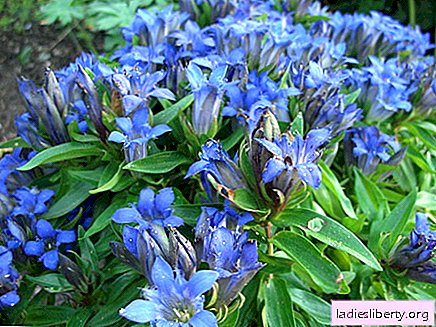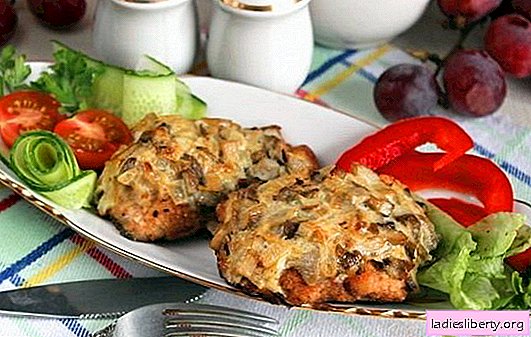
Gentian - general description
The genus Gentian from the Gorechavka family is represented by perennial and annual herbs and shrubs with short stems and single or small flowers - blue, blue, less often - yellow or white. Flowering of different types of gentians occurs at different times. The fruit of this plant is a small box with small seeds. Large, cultivated types of gentians (there are more than 90) are used to decorate flower beds and gardens, and many species are also used in folk medicine.
Gentian - types and places of growth
The genus Gorechavka is represented by more than 500 species that grow throughout the globe, but most of all - in the temperate zone of the Northern Hemisphere, especially in alpine and subalpine meadows. For medical purposes, yellow gentian is most often used. However, gentian is considered a full-fledged substitute for it. Also, in folk medicine, common gentian, or blue gentian (blue St. John's wort) is widely used. Other species used as medicinal raw materials are single-cup gentian, bearded gentian, large-leaved gentian, cold gentian, and rough gentian. The least valuable from a medical point of view are gentian gentian and cross-leaf gentian.
Gentian - medicinal properties
Gentian drugs are used to stimulate appetite, stimulate the secretion of digestive glands, and they also have anti-inflammatory and antiseptic effects. They are able to improve bile secretion and bile formation, strengthen heart contractions.
Indications for their use are digestive disorders, which are characterized by a lack of appetite and achilia (abnormal composition of gastric juice), as well as anemia and diathesis (scrofula). Decoctions and infusions of gentian roots are prescribed as a tonic for patients who undergo rehabilitation after serious illnesses.
Traditional medicine has also long used gentian to strengthen vitality, stimulate the liver and gall bladder, treat scurvy, arthritis, diseases of the spleen, jaundice, catarrh of the stomach, flatulence and constipation.
Gentian - dosage forms
The roots of the plant are used as medicinal raw materials. Under natural conditions, they are dug up in the spring or autumn no earlier than the age of four, and on the plantations - the fifth to sixth year of life. Having cleaned the roots from the ground, they are cut from the stems and, quickly washed in cold water, cut into pieces having a length of up to 15 cm, then dried for a short time. If the gentian roots are dried for a long time, they lose their healing properties. Store the finished raw materials in cool, dry rooms for no more than 5 years.
Gentian - recipes
To improve appetite, take a decoction of gentian roots, for the preparation of which 1 tbsp. l dry raw materials, pour 250 ml of water, boil for about 10 minutes. Take 20 gr. before eating. To treat gout, rheumatism and arthritis, a decoction is prepared, for the preparation of which 3 tsp. dry raw materials are poured into 700 ml of water and boiled for about 15 minutes, then, after insisting for 2 hours, take half a glass before meals. Cooking a decoction for the future is not recommended, since it is poorly stored.
For the treatment of pulmonary tuberculosis, malaria, lack of appetite, sluggish digestion, persistent heartburn, constipation and other gastric diseases, tincture is used, for the preparation of which 50 gr. herbs for a week insist in 500 ml of vodka. Take tincture of 30 drops diluted in 6 tbsp. tablespoons of water.
To treat foot sweating, prepare a decoction for foot baths, boiling 5 tbsp. l a mixture of gentian root (1 part) and oak bark (3 parts). Such baths should be done every day before bedtime.
Gentian powder, mixed with powder of chamomile flowers, is sprinkled with festering wounds.
Gentian - contraindications
It is believed that without fear of side effects, you can take gentian drops (tincture) in the amount of 35 drops. However, people who suffer from high blood pressure have stomach and intestinal ulcers, and pregnant women should not take gentian.
In some people, bitterness can provoke an allergic reaction in the form of a headache, so they are not recommended to take medicinal plants with a bitter taste, including gentian preparations.
Comments











